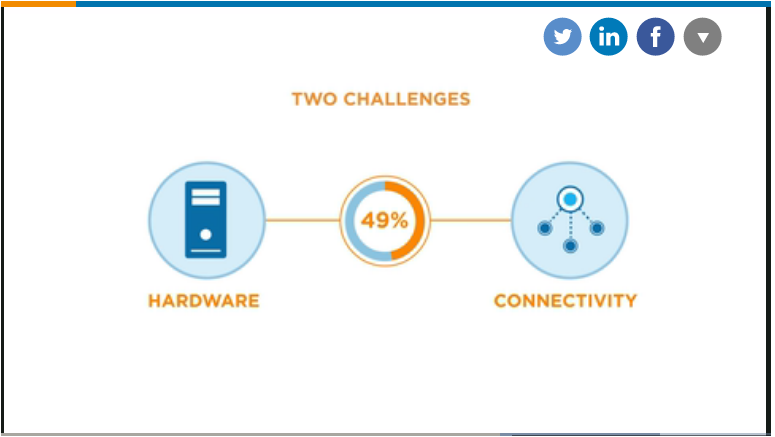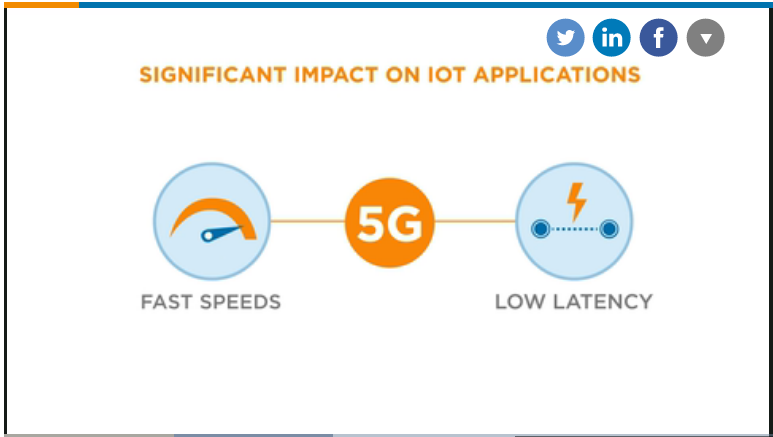By Gina Roos, editor-in-chief
An internet of things (IoT) sensor survey , conducted by TE Connectivity, finds three common challenges among the 180 engineers who responded to the survey. These key challenges are finding the right hardware and connectivity, and security issues. Survey respondents are primarily senior engineers with an interest in consumer, industrial, and automotive IoT.
Forty-nine percent of respondents said finding the right hardware and connectivity are their two biggest challenges. This isn’t surprising, according to TE Connectivity, due to the availability of multiple wired and wireless technology options to connect IoT devices.

The third challenge, cited by 44% of respondents, is security. The industry is still undergoing big challenges in providing security for connected devices as IoT industry organizations and companies continue to develop best practices and platforms to deliver and manage IoT security for billions of connected devices. A 2019 IDC report estimates that the number of connected IoT devices will reach 41.6 billion, generating 79.4 zettabytes of data in 2025.
Rounding out the top five challenges are developing the right software, according to 43% of respondents, and cloud computing issues, according to 14% of respondents.
A key finding indicates that design engineers expect 5G to expand the proliferation of IoT. Almost 60% of respondents expect 5G will mean getting data faster, resulting in new IoT applications. One reason: 5G networked devices can be any type of device.

Engineers also expect the benefits of 5G — fast speeds and low end-to-end latency — will have a big impact on IoT applications.
Ericsson’s June 2019 Mobility report forecast that 5G subscriptions will reach 1.9 billion by the end of 2024. This translates into 35% of traffic on 5G networks, and up to 65% of the global population covered by the technology. This is the fastest generation to be rolled out globally, said Ericsson.
Engineers also expect several other areas to impact IoT development. These include different types of data, gathering more data faster, lower current consumption in IoT devices, and smaller (miniaturized) parts.
- 29% said the ability to capture different kinds of data was critical
- 26% said gathering more data faster from applications was significant
- 25% said lower current consumption in IoT devices would enable networks to reduce power —consumption overall, and also reduce the strain on data transmission
- 19% mentioned the importance of smaller, miniaturized components
Work is being conducted across all types of components from RF power ICs and modules to connectors. While the complexity of 5G antennas is very high, it’s also important that designers reduce antenna size and power consumption.
However, engineers believe more work needs to be done in several areas, including:
- Hardware endurance: 57%
- Measurement accuracy tied with measurement stability: 52%
- Sensor intelligence: 46%
- Processing speed: 31%
- Cloud analytics: 16%
Most respondents agreed that miniaturization is key to IoT development. Eighty-five percent of engineers overwhelmingly agreed, while 47% thought this was very true, and 38% said it was somewhat significant to the continued proliferation of the IoT. In addition, 15% believe sensor miniaturization has already gone as far as is needed, said TE.
So how do engineers start their IoT solution design? TE discovered that the majority (78%) of engineers start with hardware choices, while only 22% started by specifying software.
Clearly, there are still big challenges around the design and development of devices and services for the IoT. But design engineers will be on the forefront of delivering and meeting the demand for connected devices across all types of end markets and applications.
Advertisement
Learn more about Electronic Products Magazine





